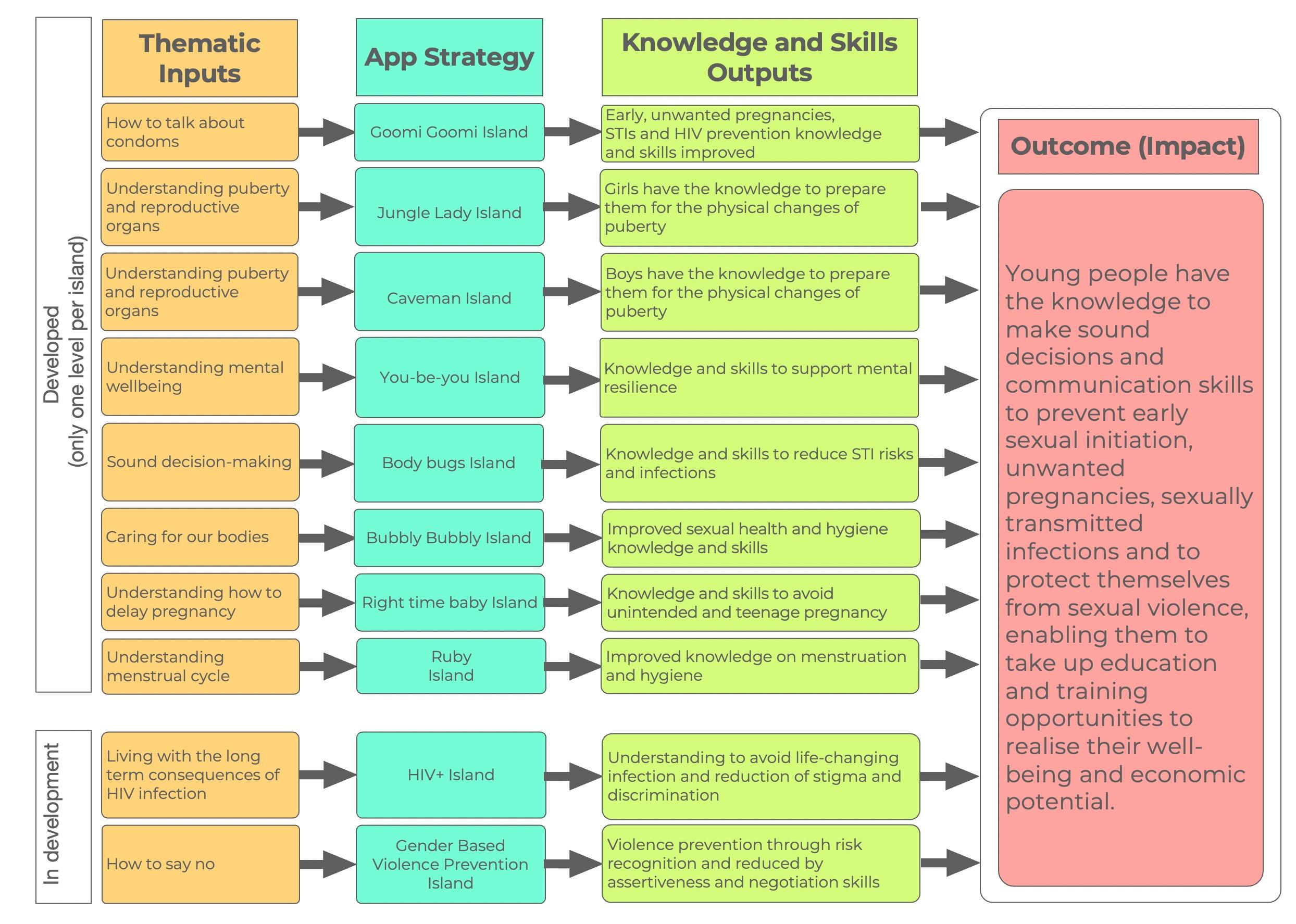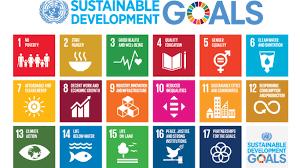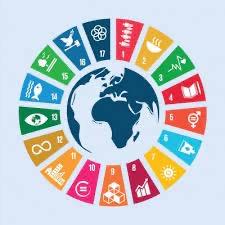
1 minute read
OUR IMPACT
It is our vision supporting young people globally to safely transition into adulthood and fostering their personal, social and economic potential.

Advertisement
“It is our mission to provide digital gamified learning programs that address sexual and reproductive health education and that are globally accessible.
Karin Stierlin Founder taboobreaker association Initiator Love Land
Our theory of change / Impact map of the existing topic islands


The Love Land app contributes to five of the Sustainable Development Goals.
SDG GOAL 1: NO POVERTY
SDG GOAL 3: GOOD HEALTH AND WELLBEING SDG GOAL 4: QUALITY EDUCATION
SDG GOAL 5: GENDER EQUALITY
More than 700 million people, or 10 per cent of the world population, still live in extreme poverty today, struggling to fulfil the most basic needs like health, education, and access to water and sanitation, to name a few.
Ensuring healthy lives and promoting well-being at all ages is essential to sustainable development. Currently, the world is facing a global health crisis unlike any other — COVID-19 is spreading human suffering destabilizing the global economy and upending the lives of billions of people around the globe. Education enables upward socioeconomic mobility and is a key to esca-ping poverty. Yet, never before have so many children been out of school at the same time, disrupting learning and upending lives, especially the most vulnerable and marginalised.
Gender equality is not only a fundamental human right, but a necessary foundation for a peaceful, prosperous and sustainable world. Yet, 1 in 5 women and girls between the ages of 15 and 49 report experiencing physical or sexual violence by an intimate partner within a 12-month period.
SDG GOAL 10: REDUCED INEQUALITIES
Reducing inequalities and ensuring no one is left behind are integral to achieving the Sustainable Development Goals. Inequality within and among countries is a persistent cause for concern. Despite some positive signs toward reducing inequality in some dimensions, such as reducing relative income inequality in some countries and preferential trade status benefiting lower-income countries, inequality still persists.






